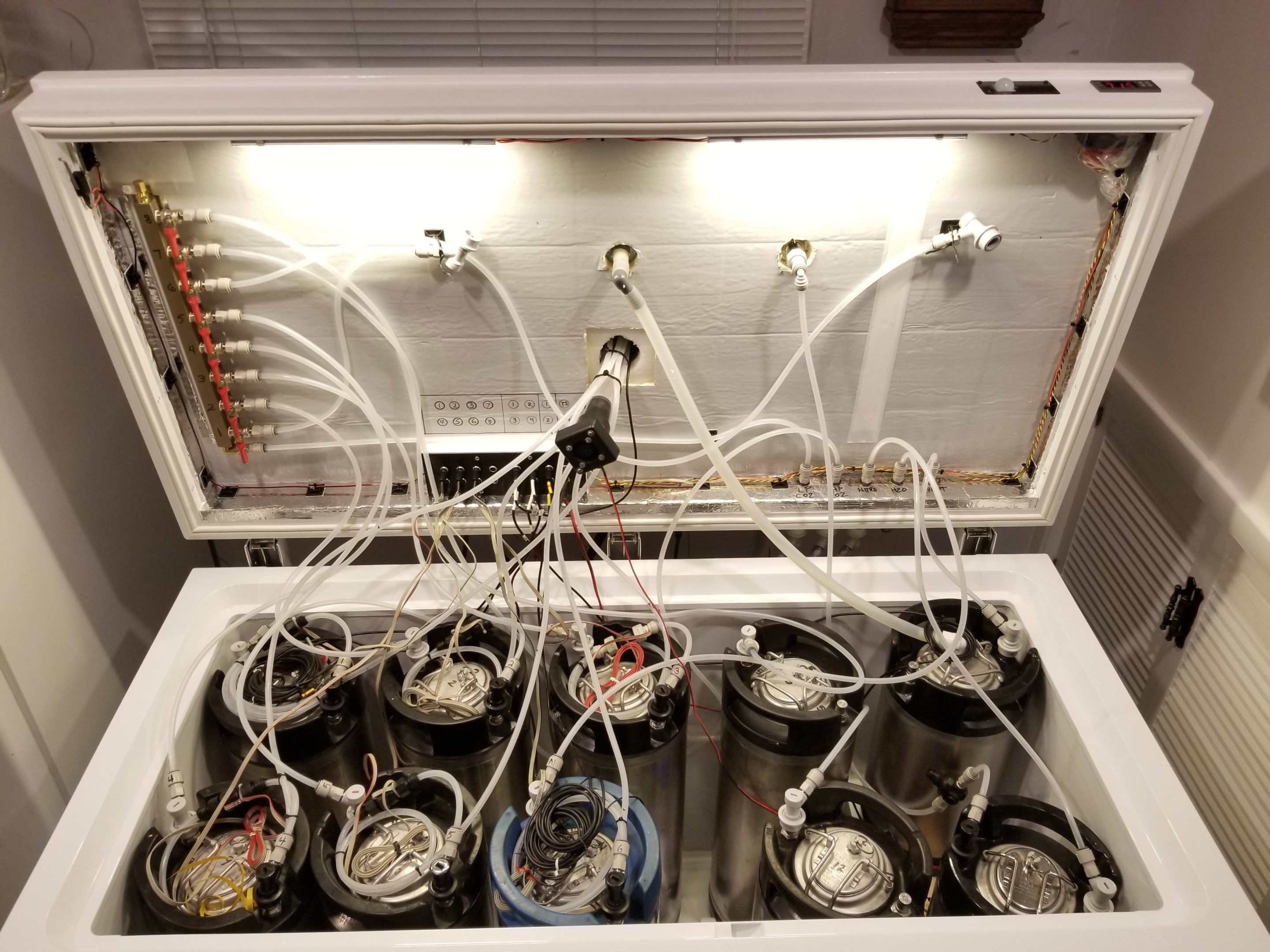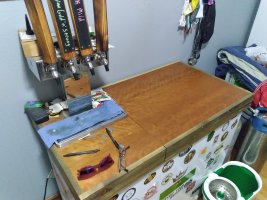physics911
Well-Known Member
- Joined
- Mar 9, 2015
- Messages
- 93
- Reaction score
- 22
Good day, everyone. This is more of a woodworker question than a keezer question.
For my new keezer I have made a beautiful wormy oak top which is about 1.25" thick (32mm).
I'm considering getting rid of the chest freezer lid and just insulating the oak top and adding the seal from the lid to the wood.
I've already got c-channel on the bottom of the wood to mitigate warping, , as well as a few stress relief kerf cuts on the bottom, as that particular piece was quite prone to cupping.
Anyone have any experience with ditching the freezer lid and what impact it might have on the wooden top?
For my new keezer I have made a beautiful wormy oak top which is about 1.25" thick (32mm).
I'm considering getting rid of the chest freezer lid and just insulating the oak top and adding the seal from the lid to the wood.
I've already got c-channel on the bottom of the wood to mitigate warping, , as well as a few stress relief kerf cuts on the bottom, as that particular piece was quite prone to cupping.
Anyone have any experience with ditching the freezer lid and what impact it might have on the wooden top?





